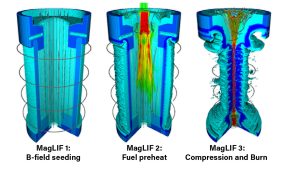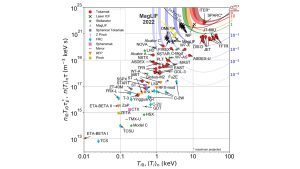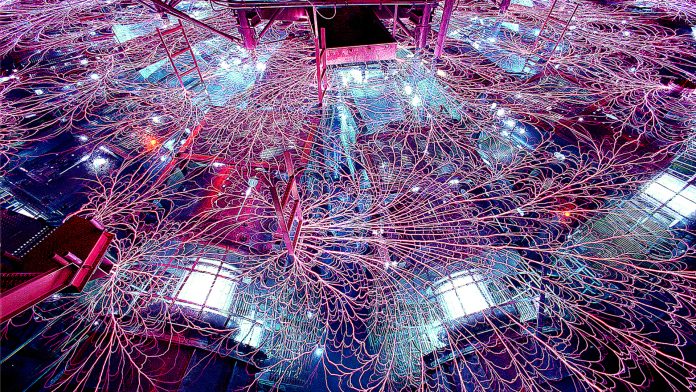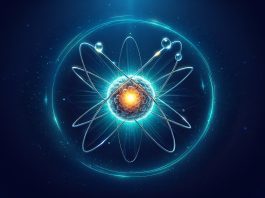PPPP As sustainable fusion energy inches closer to reality, Dr Simon Bott-Suzuki of the University of California San Diego explores progress and persistent challenges.
Fusion energy has the potential to help address global energy needs as the demand for power continues to rise. Renewable sources such as solar and wind are a vital piece of the puzzle. However, renewables only produce energy when, for example, the sun shines or the wind blows. Modern society, and what is aspired to by the enormous population of the developing world, demands power be available at a moment’s notice, any time of day.
Storage methods can help optimise these for our usage demands throughout the day, but this doesn’t increase the overall energy available, it just makes what is generated more flexible. This is one reason the move from fossil fuel power plants continues to be so difficult: they provide a baseload – the ‘always on’ power we demand to run our lives 24/7.
Magnetic Drive Inertial Fusion Energy (MD-IFE)
Fusion plants will produce this baseload power and accelerate the retirement of fossil fuel power plants. The U.S. Department of Energy has recently set out several programmes to accelerate the realisation and commercialisation of fusion power based on the White House’s Bold Decadal Vision for Fusion Energy.
This investment is driving innovation in the field and pushing researchers to develop the practical implementation of their research schemes. Alongside this, the rapid emergence of the private fusion industry means fusion power can be achieved by more than one solution – an unlikely scenario under solely federal support. The co-operation of federal and private funding seems to be the most practicable way forward and is already allowing productive partnerships to develop.
Within the two main approaches, magnetic and inertial confinement, MD-IFE sits within inertial fusion energy. The inertial fusion approach has been supported for several decades by the National Nuclear Security Administration (NNSA), which includes both the achievement of ignition at the laser-fusion National Ignition Facility (NIF), and the underpinnings for development of MD-IFE discussed here. This support has enabled the investigation and understanding of many of the basic physics principles governing how we can achieve fusion in single experiments. The Department of Energy funding focuses on the engineering challenges of repeating those experiments sufficiently quickly and accurately to achieve net energy gain.
The MD-IFE approach
The magnetic drive approach to inertial fusion has been led by Sandia National Laboratories, and takes advantage of the high efficiency of energy delivery possible with large pulsed power drivers. But what is pulsed power, and how can it be used to make energy? Conceptually, pulsed power is quite simple; it is the compression of electrical energy in time to provide a large electrical pulse to a target. It’s the same method we use to make lights blink or generate a camera flash; a capacitor is charged slowly, then discharged quickly by closing a switch when we want it to fire.
For fusion, it’s only the scale that is different. Instead of charging one small capacitor with, say, 9V from a battery or 110V from a wall outlet, we charge hundreds of capacitors to 100 kilo-volts (kV), and fire them all at the same time, giving short mega-volt output voltages. This electrical pulse drives a very high current in the target, typically millions of amperes. The world’s largest pulsed power driver, called ‘Z’, is housed at Sandia National Laboratories, and can apply 26,000,000 amps (26 MA) to a centimeter-sized target in just 100 billionths of a seconds (100ns).
In accordance with the laws of electromagnetism, a current makes a magnetic field, and it is this magnetic field that is used to compress a metal target filled with fuel very quickly and uniformly to drive fusion. Very large currents make very large magnetic fields, and compressional forces of billions of atmospheres (Gbar) are regularly achieved. Presently, experiments on Magnetised Liner Inertial Fusion (MagLIF) 1-4 are carried out one at a time on Sandia’s Z Machine to optimise performance. This fusion target is central to the MD-IFE method, and again is relatively simple.

We start with a 6mm diameter metal cylinder, 10mm tall, and fill it with deuterium and tritium gas. This is placed inside the Z machine and attached to the electrodes so we can drive the large current through it. The whole experiment takes place in a vacuum and is shielded to prevent radiation and neutrons from escaping.
This ‘liner’ is then seeded with a magnetic field (MagLIF 1), heated with a laser beam (MagLIF 2), and then rapidly compressed onto its central axis (MagLIF 3) using the current drive. The compression is very similar to the ‘can crusher’ experiments hobbyists build, but on a much larger and far more accurate scale. The liner contains and rapidly heats the fusion fuel (deuterium and tritium) to high temperatures, releasing energy primarily as neutrons. These neutrons are captured in a power plant, and their energy is used to heat water to turn a steam turbine and produce electricity. We then take out the electrodes, which are damaged from the fusion event, replace them along with a new liner target and electrode set, and repeat the process. This method is well suited to generate large yields (500 MJ to several GJ) with each fusion shot, and to repeat shots every ten seconds in a large-scale power station.
Recent performance breakthroughs
Since the introduction of the MagLIF approach for MD-IFE in 2011, fusion performance has progressed at a remarkable rate. Performance of a fusion system can be measured in a number of different ways, but one primary method is the ‘triple product’ derived from the Lawson Criterion. This allows a fair comparison between the wide range of methods presently being pursued both in federal and private endeavors.

The three important quantities are the plasma density (ion density ni), the plasma temperature (more specifically the ion temperature Ti) and the time the plasma is held together (the confinement time, t). The higher the product of these quantities are, the closer a system is to achieving fusion, and we need niTit > 3 x 1021 (m-3 keV s) to make energy.
Fig. 1 reproduces Fig. 2 from Wurzel and Hsu 2022.5 This plots the triple product (nTτ) against the measured ion temperature for a wide range of experimental platforms. The premier laser-driven IFE platforms, OMEGA and NIF, show high nTτ at moderate ion temperatures (few keV), with a notable exception being the NIF ignition shot N210808, with an nTτ of 5.2×1021 keV m-3 s and an ion temperature of 10 keV. This is the only point on the plot above a Lawson criterion of unity. Magnetic confinement facilities like D-IIID at General Atomics, JET in the UK and TFTR previously at Princeton Plasma Physics Laboratory, typically show significantly higher ion temperatures, triple products in the range of ~1020 keV m-3 s, and a Lawson criteria between 0.1 and 1. The MagLIF data for MD-IFE on the original plot (black x points labeled “MagLIF”) showed data from Z shots in 2015 which demonstrated nTτ ~3×1020 keV m-3 s and ion temperatures approaching 3 keV. Data from Knapp 20226 (yellow circles points labelled ‘MagLIF 2022’) improves on these values, where the best shot gives nTτ exceeding 1021 keV m-3 s.
This makes MagLIF the only platform other than NIF to achieve such a high triple product value to date. Peak ion temperatures were 3.3 keV and the Lawson criterion was close to 0.1. This breakthrough result places MagLIF and MD-IFE in an ideal position to make rapid progress on the technological challenges that remain for energy production.
Translating physics progress to energy production
This excellent single shot performance needs translation to a repetition-rated environment suitable for fusion energy. The large-scale machines we are presently using to achieve fusion in one-time experiments will not work to produce energy; they were simply never designed to do so. There remain significant challenges to build a power station from these highly promising foundations, and much of the fusion field is working hard to understand and address how we will achieve this.
There are a number of areas we can work on together as a community, such as making sure materials are developed that give a power station a long lifetime, or how we handle and recover fusion fuels. Both of these will determine the costs of a fusion power plant, and how it will operate safely close to populated areas where the power is needed. There are also needs for each specialised fusion approach that must be addressed by those developing it. Here, MD-IFE may have significant advantages over several other approaches which are enabled by two key technologies; advanced targets and scalable pulsed power drivers.
Advanced targets: The Liner targets on the Z machine use large external field coils to produce the initial seed magnetic field required. These are difficult to build and expensive, and so not compatible with repetition-rated operation for energy. Advanced targets are under development in which the magnetic field is generated through the target itself by introducing a helical element to the current flow.7,8 These targets also reduce load inductance, allowing higher energy deposition, and are more amenable to mass manufacture for a power plant. Testing so far looks very promising, and experiments and simulation works continue to optimise designs.
Scalable pulsed power driver technology: The Z machine is sub-scale, in that there is insufficient electrical current to achieve fusion ignition. Z is also based on 1970s Marx bank technology, which has proven very effective for the job it was designed for, but is not tailored to fusion energy needs. A power plant will use a 70MA driver, about a 3x scale-up of Z, and capable of one shot every ten seconds. Sandia and its collaborators have already developed several pulsed power architectures which could be used to construct this driver, including Linear Transformer Driver (LTD)9 and the Impedance Match Marx Generator (IMG).10 These can be designed specifically for achieving energy output, can operate rapidly, and deliver electrical pulses far more efficiently to the liner target than can be achieved at present.
Building any new power plant is a complicated and expensive endeavor, and a fusion energy power plant is no exception. As we engineer solutions to critical issues, the costings and efficiencies will become more apparent and each individual fusion scheme will make advances. Of those approaches with triple products close to the required threshold, MD-IFE is likely to be one of the most economical and practical on the timescales required to be part of the solution to the energy crisis.
The fusion driver and target technology exist, and performs impressively at sub-ignition scale. The required repetition rate is consistent with our ability to reload the system to produce energy. The technology challenges to automatically reload targets, safely recycle damaged electrodes and fuel, and to recover heat are under rapid development. The next five to ten years will be very exciting as we piece together the complicated puzzle of fusion energy.
The university ecosystem supporting progress
To reach this point in the long development of fusion energy has taken several decades of continued research into how to control the physics of plasmas. Recent achievements not only in fusion plasmas, but in broader plasma physics, high energy physics, semiconductors, quantum computing, nano- and meta-materials, amongst many others, show the importance of sustained efforts to unlocking the potential of new areas of physics. University programmes supported by federal funding are the keystone to progress in research. Researchers and faculty develop enthusiastic undergraduates into high quality, well-trained graduate students, and help place them in national laboratory programmes, private industry R&D efforts, federal programmes, and more.
The Pulsed Plasma Physics Group at UC San Diego is working with a number of collaborators to drive MD-IFE forward. These include Sandia National Laboratories, Pacific Fusion Inc, the University of Michigan, Lawrence Livermore National Laboratory, Imperial College London, Los Alamos National Laboratory, and General Atomics.
A key collaboration that has allowed a highly productive research environment to develop has been an NNSA-sponsored Center of Excellence. This was led by Professor David Hammer and Professor Bruce Kusse at Cornell University since 2003, and is now being led by Professor Ryan McBride at the University of Michigan since 2023. This foundational support has allowed students and researchers to thrive, develop innovative solutions, and push the boundaries of plasma physics research. The students we train actively participate in many areas of plasma science, including remarkable achievements in fusion science. Each achievement moves us one step closer to the realisation of fusion power in our modern lives.
References
- S. A. Slutz et al, Phys. Plasmas 17, 056303 (2010)
- S. A. Slutz and R. A. Vesey, Phys. Rev. Lett., 108, 025003 (2012)
- Gomez, M. R. et al, Phys. Rev. Lett. 113, 155003 (2014)
- Gomez, M. R et al, Phys. Rev. Lett. 125, 155002 (2020)
- S.E. Wurzel and S. C. Hsu, Phys. Plasmas, 29, 062103 (2022)
- P. F. Knapp et al, Phys. Plasmas 29, 052711 (2022)
- S. A. Slutz et al, Phys. Plasmas 24, 012704 (2017)
- P. F. Schmit et al, Phys. Rev. Lett. 117, 205001 (2016)
- Stygar, W. A. et al, Phys. Rev. Accel. Beams (2015)
- Stygar, W. A. et al, Phys. Rev. Accel. Beams 20, 040402 (2017)
Please note, this article will also appear in the 20th edition of our quarterly publication.









